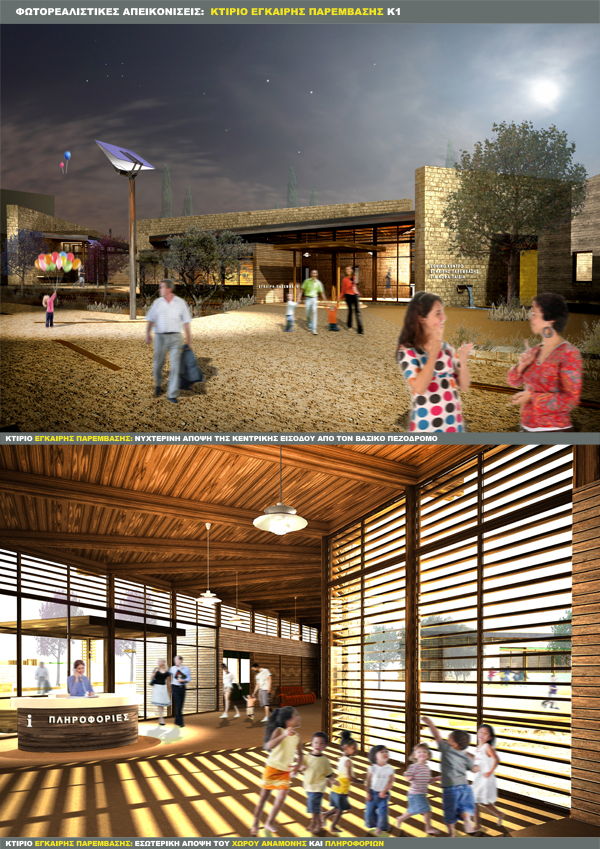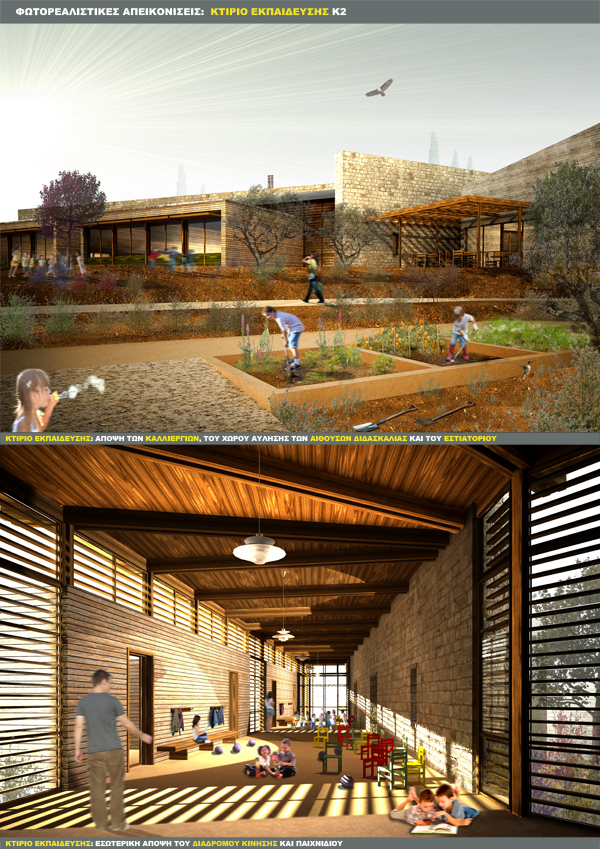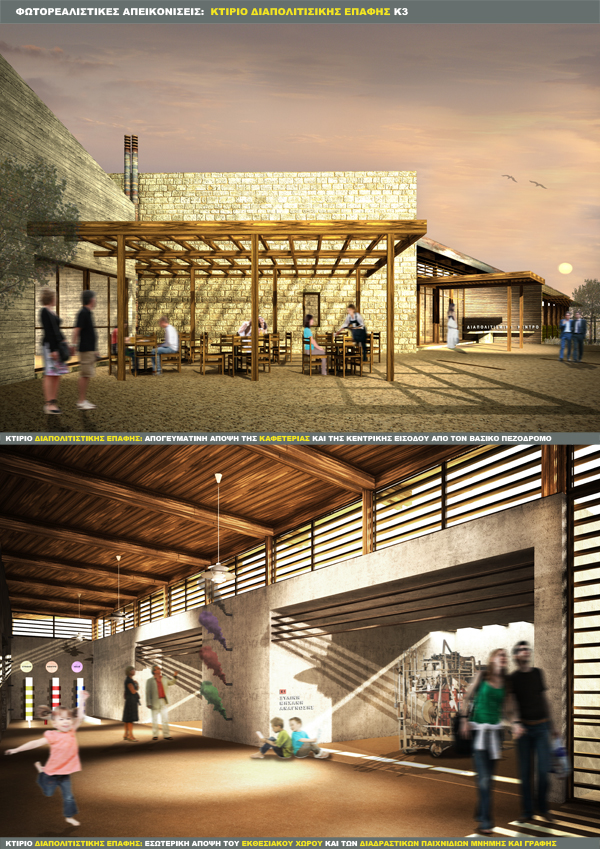STUDENTS PROJECTS
PROJECTS 2011
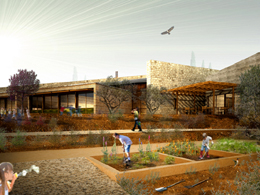
09 March, 2012
New urban landscapes
National Early Intervention Center for Hearing-Impaired Children.
Students : Alexandros Kitriniaris, Emmanouil Lekkas
Supervising Professor: Tasis Papaioannou
Advising Professors: Constantinos Moraitis, Eleftheria Tsakanika
Scientific Associates: Marianna Chatzopoulou - teacher of hearing-impaired children and interpreter of Greek sign language. Sofia Romboli - interpreter of Greek sign language, Constantinos Gargalis - president of the Hellenic Federation of the Deaf, Chrysa Razi - teacher of hearing-impaired children - Institute for the Deaf. Hellenic Theatre of the Deaf. Vivi Leli - Biologist.
National Technical University, Faculty of Architecture
Presentation Date: 30 March 2011
The topic of this dissertation is the exploration of expressive communication systems in the modern urban landscape. The main example of implementation is the study of the special cultural community of hearing-impaired individuals, with the purpose of creating a National Centre for Early Intervention for Hearing-Impaired Children, in the area of the Athens Nursing Home in Ampelokipi district. The intellectual development, semantic register systems, the interpretation of children's intelligence and perceptive mechanisms of hearing-impaired individuals formed the basic principles of this synthesised approach.
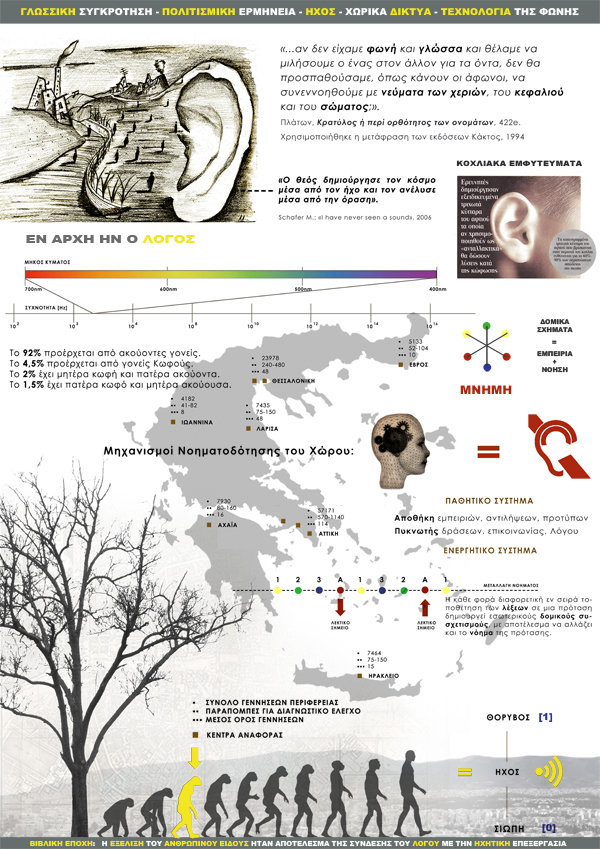
Despite the fact that the development of Sign Language and the foundation of the first School for the Deaf in Paris, in the mid-17th century formed the most significant aspect of their culture, before the Enlightenment, which is to say before the 18th century, the hearing-impaired were viewed as subhuman beings with no feelings and underdeveloped intelligence. Although these conditions were improved, they did not change until quite recently, in the early 20th century. Nevertheless, the recent developments in genetics and other medical progress caused a wave of reactions towards the tension between the treatment of deafness and the loss of their culture.
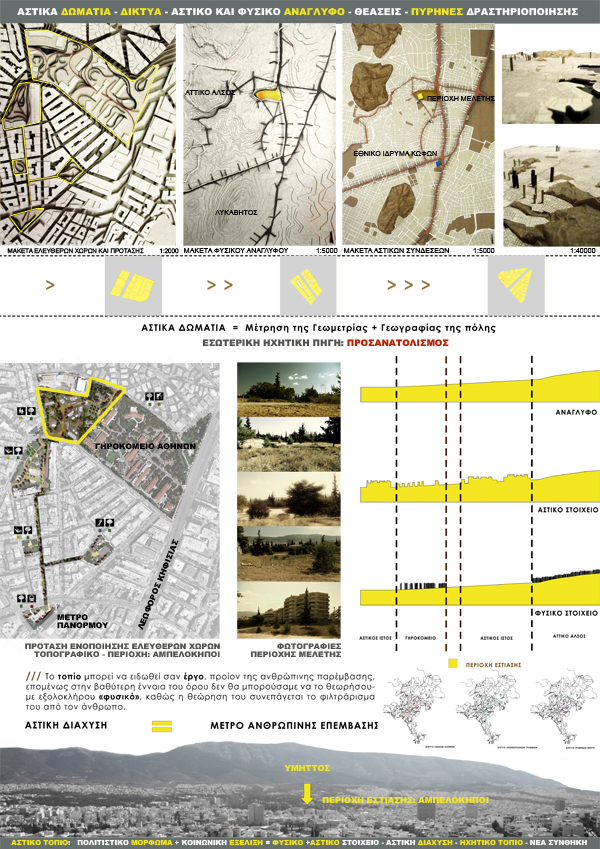
From both our theoretical exploration as well as our immediate experience with the hearing-impaired community, we surmised that children who are partially or wholly hearing-impaired from birth or before developing a linguistic code, display a weakness or delay in both thought and memory development, if these are not promptly dealt with. For this reason, we have concentrated our area of research around the infancy of pre-speech hearing-impaired children, in particular the 0-6 years age group.
The particularities involved in the perception of the hearing-impaired, as well as in childhood intelligence, led to the composition of a precisely defined architectural vocabulary relating to linguistic structural relationships for the emergence of meaning. From the outset the creation of a tripartite layout is proposed, comprising a basic movement path composed of building masses below it, corresponding to the linguistic signs that are pronounced beneath a linear continuum. In the attempt to create a direct perceptual relationship between buildings and outdoor space, we are attempting to spatially organise meaning through continual sectioning of perceptual levels, which are repeated in the landscape formation of the complex during the peripatetic experience, and in this way, at the end of the path, they develop noetic maps which are particularly necessary for the spatial orientation of hearing-impaired individuals.
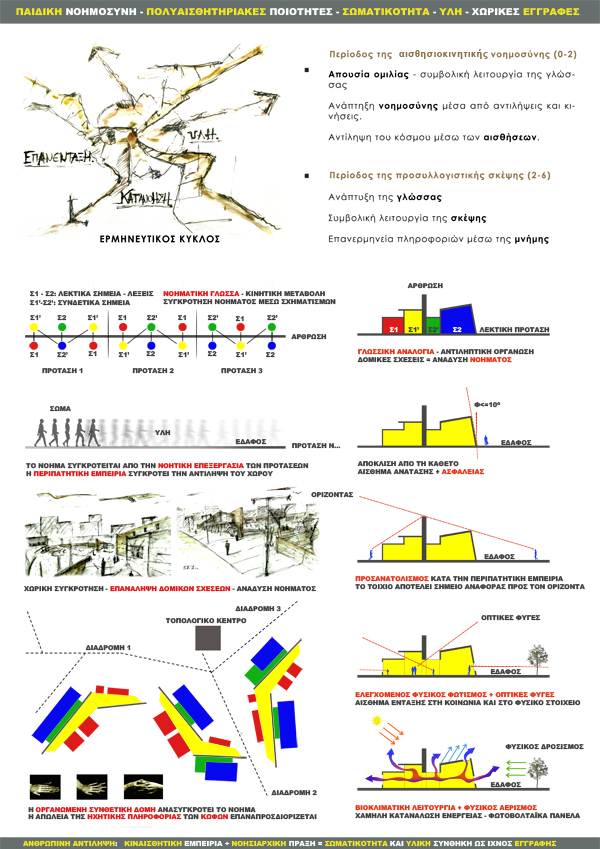
Movement through the complex is recorded as a crack in the ground, which imprints the kinetic alteration between the natural and man-made environment beneath it. The final proposal is formulated so that the buildings are expressed as "fragments" of both urban and naural elements. The powerful explosion taking place within the intermediate space, shatters the structure of a single building mass into three smaller ones. The ground is treated in the same way, following the folds on its surface that are caused by the synthetic tension in the landscape and the directional momentum of the buildings.
In this way, movement through the building complex does not have the character of a straight line, since the buildings are always approached at an angle, but a lateral, zigzag, gradual penetration. Particularly for hearing-impaired individuals, movement through the complex is perceived as a flow of perceptual levels. Movement is thus designed as a path and a patchwork of landscape points.
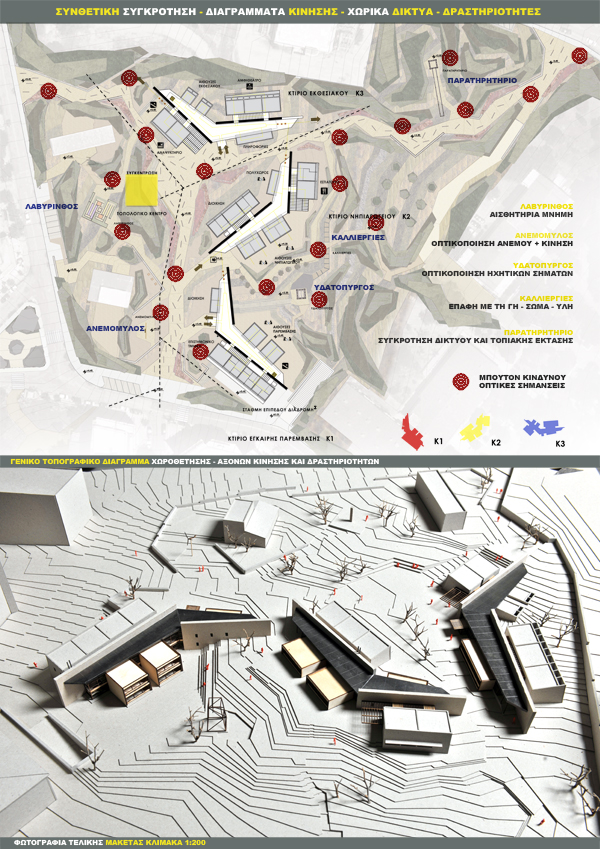
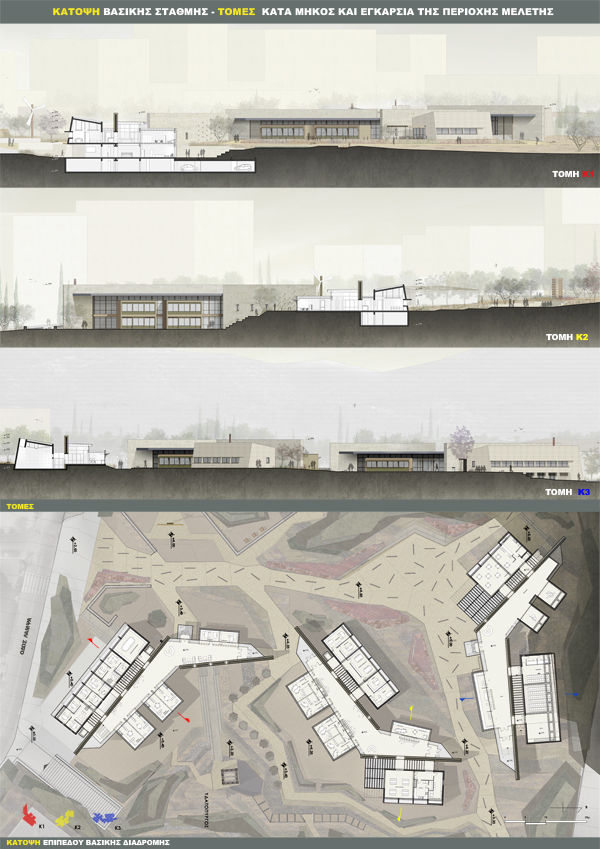
Both inside the buildings as well as in the outdoor space, bells and panic buttons with visual and tactile information are installed, together with maps and escape points of the complex. On the stage of the amphitheatre and inside the vibration laboratory, floating floors are used for an amplified transmission of auditory messages through the floor, and a special water tank is also installed, in which surface turbulence is produced, either with percussive musical instruments, or parametric mechanisms, resulting in a visualisation of auditory in formation, and the consolidation of the training process.
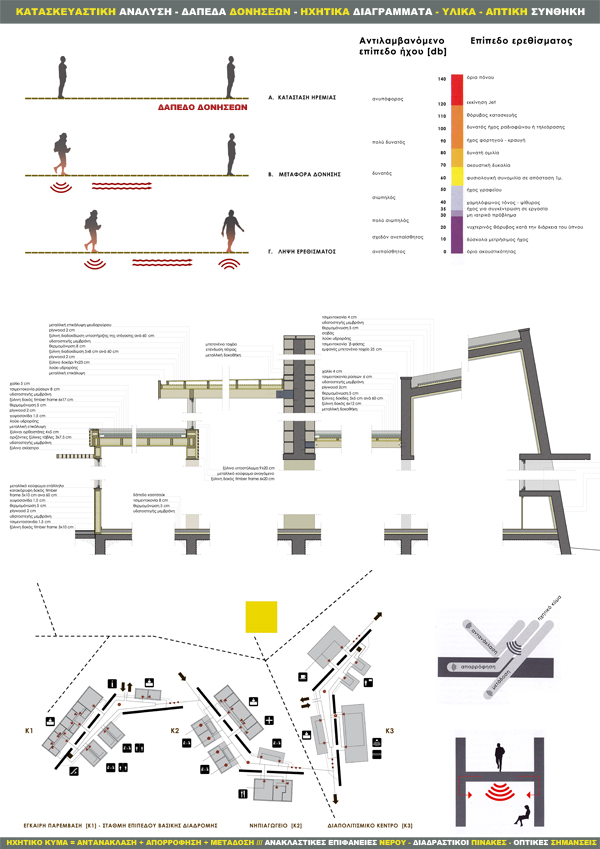
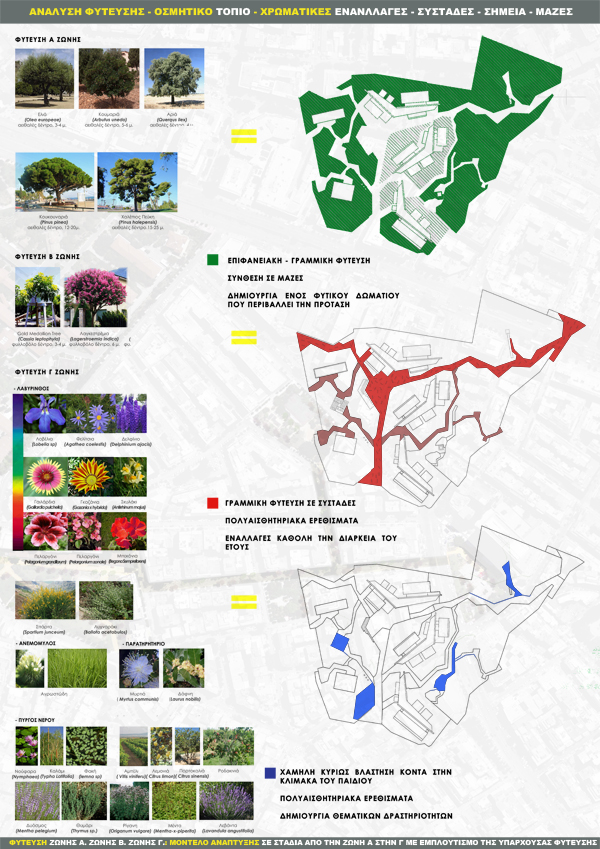
The transfer of the aforementioned conceptual mechanisms to an urban scale, attempts to enrich the space with new experience in modern urban centers, placing human communication as the primary connective core of an architecturally composed locus.
